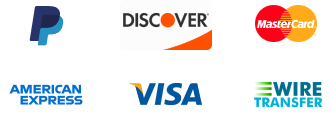The global specialty printing consumables market size was valued at USD 41.22 billion in 2024 and is estimated to reach USD 56.37 billion by 2033, growing at a CAGR of 3.54% during the forecast period (2025–2033). The rise of e-commerce and the demand for customized packaging solutions are driving the adoption of specialty printing consumables. High-quality printing on packaging materials enhances brand recognition, pushing companies to invest in advanced consumables.
Specialty printing consumables refer to high-performance materials used in various printing processes to achieve superior print quality, durability, and functionality. These include toners, inks, specialty substrates (such as coated paper, films, and textiles), and printing chemicals. Unlike standard consumables, specialty variants are designed for specific applications like commercial printing, packaging, industrial labeling, and high-resolution digital printing. They enhance color vibrancy, longevity, and print precision, making them essential for businesses in advertising, publishing, and corporate sectors.
The rising demand for customized printing solutions is driving growth in the specialty printing consumables market. Businesses across industries, such as packaging, fashion, and advertising, are increasingly using personalized prints to enhance brand identity and customer engagement.
For instance, Coca-Cola’s "Share a Coke" campaign used variable data printing (VDP) to personalize millions of bottles with customer names, significantly boosting sales and consumer interaction. Similarly, in the textile industry, Nike offers custom-printed sneakers, allowing consumers to design unique footwear with specialized inks and coatings.
This trend is further fueled by advancements in digital printing technologies, which enable high-quality, cost-effective customization production. As consumer preferences shift toward personalized experiences, demand for specialty inks and coatings continues to rise.
The increasing reliance on digital media and paperless communication is a major restraint for the specialty printing consumables market. Businesses and consumers are shifting to digital platforms for advertising, documentation, and communication, reducing the demand for printed materials. For example, global banks like HSBC and Citibank have adopted paperless banking, encouraging e-statements and digital transactions to minimize paper use.
Additionally, industries such as publishing and marketing are prioritizing digital content over traditional print, impacting sales of specialty inks and toners. As sustainability efforts and cost-saving initiatives grow, the decline in print-based communication poses a challenge for the specialty printing industry.
The growing adoption of specialty inks for digital textile printing and ceramic decoration presents a significant market opportunity. Fashion brands and interior designers are increasingly using digital printing to create intricate, high-quality designs on fabrics and ceramics with greater efficiency and lower waste.
For example, In 2023, Epson Monna Lisa launched a series of digital textile printers that used advanced pigment inks to deliver vibrant, eco-friendly prints on a variety of fabrics. Similarly, in ceramics, Durst’s Gamma XD’s latest series offers high-resolution digital printing solutions, enabling customized tile and pottery designs with minimal environmental impact.
As demand for personalized home décor and sustainable fashion grows, specialty inks tailored for these applications are expected to see increased adoption, driving market expansion.
| ATTRIBUTES | DETAILS |
|---|---|
| Study Period | 2021-2033 |
| Historical Year | 2021-2024 |
| Forecast Period | 2025-2033 |
| By Product |
|
| By End-Use |
|
| Regional Insights |
|
The global specialty printing consumables market is bifurcated into product and end-use.
Toner holds the largest share in the global market due to its widespread use in laser printing. Businesses, government offices, and educational institutions prefer toner over ink for its efficiency, longevity, and cost-effectiveness. Compared to traditional ink, toner produces smudge-resistant prints, making it ideal for high-volume printing tasks. The increasing adoption of multifunction printers and the rising demand for professional-quality prints further contribute to the dominance of this segment. Moreover, the growing trend of digital printing in the packaging and publishing industries continues to drive toner sales, ensuring its sustained leadership in the specialty printing consumables market.
The corporate sector is the leading end-use segment in specialty printing consumables due to its high dependence on printed materials for documentation, marketing, and official communication. Large enterprises and small businesses require consistent and high-quality printing solutions for reports, contracts, brochures, and presentations. The demand for specialty substrates and high-yield toners is particularly strong in this sector to ensure cost efficiency and professional output. Advancements in sustainable printing solutions and managed print services are further boosting the adoption of specialty printing consumables in corporate environments, reinforcing their dominant market position.
Based on region, the global specialty printing consumables market is bifurcated into North America, Europe, Asia-Pacific, Latin America, and the Middle East and Africa.
North America holds a dominant position in the global specialty printing consumables market, accounting for more than 30% of the total market share. This leadership is driven by the region’s strong commercial printing industry, advanced digital printing technologies, and increasing demand for specialty inks and coatings across multiple sectors.
One major factor contributing to North America’s dominance is the thriving packaging and labeling industry. The rise of e-commerce platforms like Amazon and Walmart has fueled the need for high-quality, customized packaging solutions. Specialty inks, including UV-curable and water-based inks, are widely used for sustainable and durable packaging prints.
Moreover, the region’s booming textile and fashion industry is adopting digital textile printing for customized apparel. Companies like Spoonflower, a U.S.-based custom fabric printing firm, use specialty inks to offer on-demand, eco-friendly textile prints. Similarly, in ceramic decoration, North American tile manufacturers like Dal-Tile are increasingly using digital ceramic printing to produce intricate designs with high durability.
With continuous investment in sustainable printing technologies and increasing consumer demand for personalized products, the region is expected to maintain its market leadership, offering market growth opportunities for specialty printing consumables manufacturers.

The key global specialty printing consumables market players are;
Request Table of Contents (TOC), Please Fill below form



